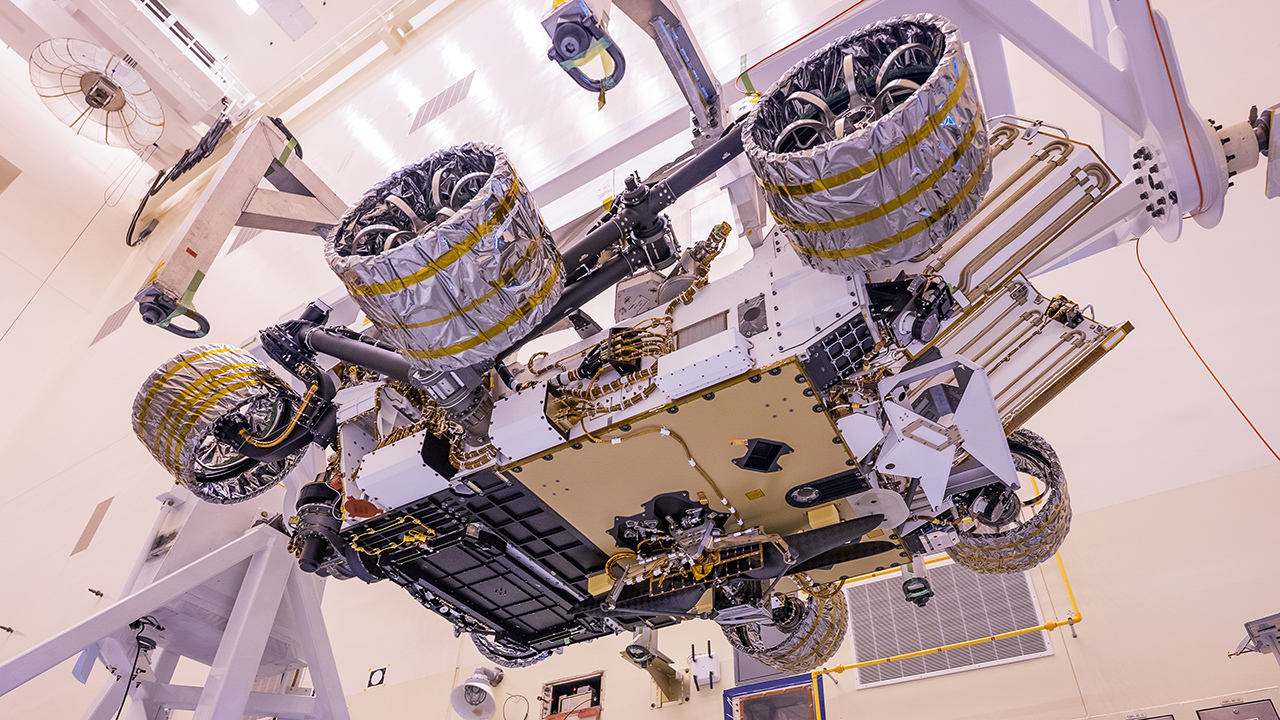
Despite the on-going COVID-19 pandemic, preparations for the launch of NASA’s next rover to Mars this July, Perseverance, are continuing on schedule. Most recently, the engineering and technician team completed two more crucial tasks – attaching the Mars Helicopter to the bottom of the rover and fueling the sky crane descent stage.
Both milestones were completed this past week at Kennedy Space Center in Florida.
The helicopter, a small drone-like quadcopter, is the first of its kind, and will be the first-ever attempted powered flight in the atmosphere of another planet. If successful, it will soar above the martian surface ahead of the rover, acting as a sort of scout. It will help determine safe routes and look for interesting features on the landscape for the rover to investigate.
The helicopter is about the size of a toy drone, only weighing four pounds (1.8 kilograms), but has large propellers four feet (1.2 meters) in diameter, necessary to maintain loft in Mars’ very thin atmosphere.
Just before being attached to the belly of the rover, no less than 34 electrical connections were made between the helicopter, the rover and the delivery system. The delivery system was then attached to the rover after confirmation that data and computer commands were being sent and received properly. At the last step, the rover team needed to make sure that the helicopter could receive electrical charges from the rover. Without that power, the helicopter can’t be deployed onto the surface. But after deployment, it will be able to generate its own power using a solar panel.
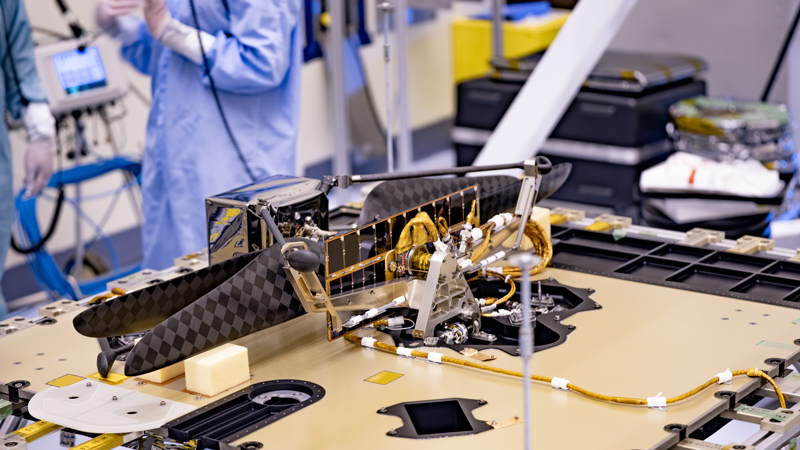
Perseverance is scheduled to land on Mars on Feb. 18, 2021, with the helicopter to be deployed the following May. The rover will drive about 330 feet (100 meters) away from the helicopter, and then the helicopter will undergo extensive testing before its first flight. The first flight-test campaign will last up to 30 days.
If it works, the helicopter will be an amazing achievement, since no one has tried to fly one, or any kind of aircraft, in another planet’s atmosphere before. It will also be a valuable addition to the Mars exploration program, filling in a gap between surface rovers and landers and orbiting spacecraft.
Also this past weekend, the engineers and technicians fuelled the descent stage for the rover. A total of 884 pounds (401 kilograms) of hydrazine monopropellant were loaded into the descent stage’s four fuel tanks. The propellant will be pressure-fed to the eight landing engines through 120 feet (37 meters) of stainless steel and titanium tubing. These engines are absolutely critical to the mission, slowing the spacecraft enough to be able to land safely. When the spacecraft is 7,200 feet (2,200 meters) in altitude, it will be traveling at 180 mph (80 meters per second). But it needs to be able to reduce that speed in a short amount of time, down to 1.7 mph (0.75 meters per second) when it is only 66 feet (20 meters) above the ground.
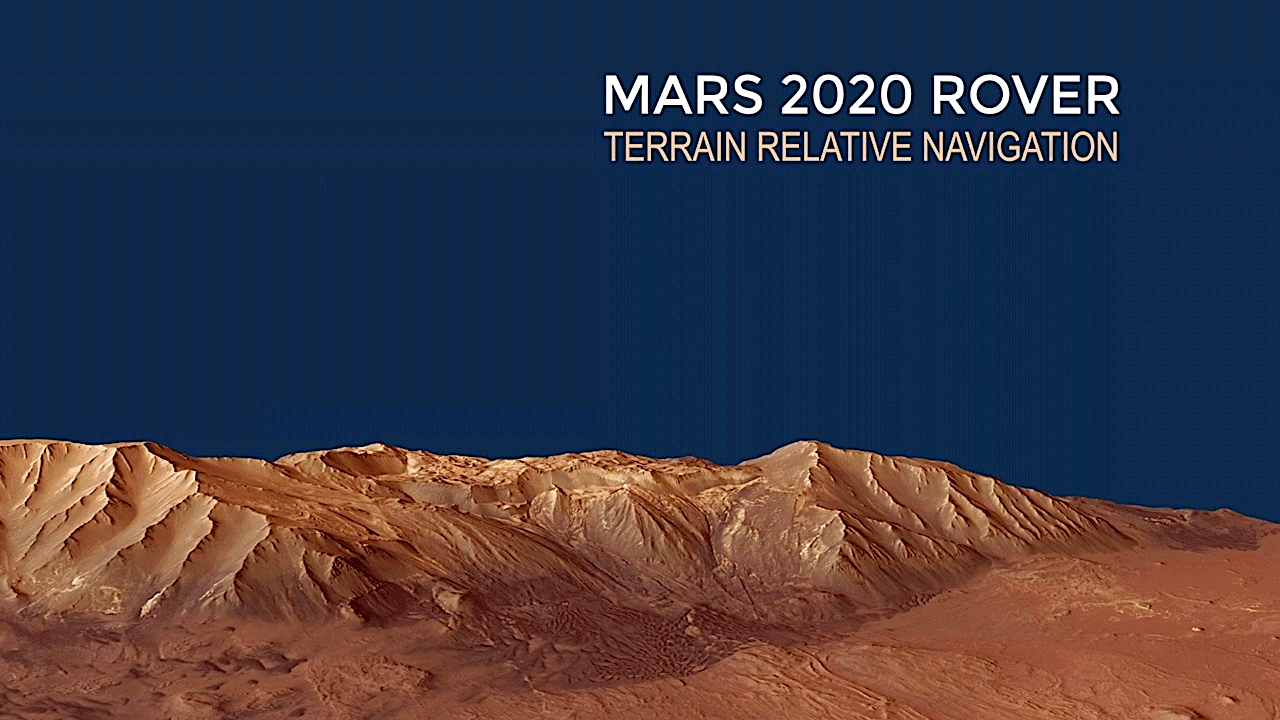
“The last hundred days before any Mars launch is chock-full of significant milestones,” said David Gruel, the Mars 2020 assembly, test and launch operations manager at JPL. “Fueling the descent stage is a big step. While we will continue to test and evaluate its performance as we move forward with launch preparations, it is now ready to fulfill its mission of placing Perseverance on the surface on Mars.”
Perseverance will land on Mars the same way that Curiosity did, using the sky crane system. During the latter part of the descent, the rover will be suspended 25 feet (7.6 meters) below the descent stage on long nylon cords. The spacecraft then uses its onboard autopilot system for the landing. When the touchdown is confirmed, the cords are automatically severed and the descent stage flies off, to crash-land away from the rover landing site.
Perseverance also received its six wheels on March 30, 2020. These wheels are slightly larger and narrower than those on Curiosity. Their skins are almost a millimetre thicker and have new treads (grousers). Curiosity’s wheels had 24 chevron-shaped treads but those on Perseverance have 48 slightly curved ones. These changes will help the wheels to last longer and withstand sharp rocks better than Curiosity’s, which have sustained a fair amount of damage since 2012, although they are still completely functional.
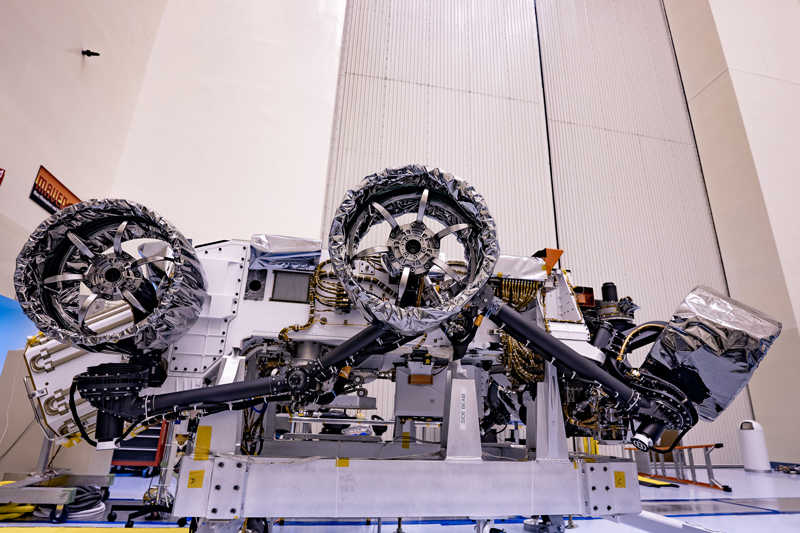
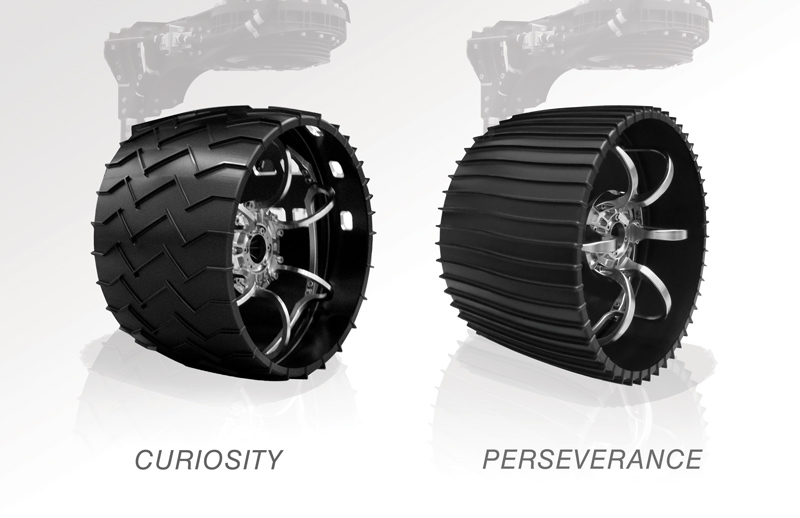
While similar in appearance to the Curiosity rover, Perseverance’s mission is a bit different. It will be the first mission since the Viking landers in the 1970s/1980s to search directly for evidence of life on Mars. It will look for chemical or other fossil evidence of past microbial life, not just evidence for geological habitability as with Curiosity.
Perseverance will also collect samples of rock and soil and store them for later return to Earth by a future sample-return mission, another first in Mars exploration. The rover will land in Jezero Crater, which used to hold a lake a few billion years ago, and still contains a delta where a river once emptied into the lake. This is similar to Curiosity’s landing site in Gale Crater, which also used to be a lake and contains ancient sediments, mudstones, clays and even riverbed gravel. Such locations are ideal to search for traces of microscopic fossils that could be preserved until today.
The launch window for the launch of Perseverance is from July 17 – Aug. 5, 2020. The rover will launch on a United Launch Alliance Atlas V 541 rocket from Cape Canaveral Air Force Station.
More information about the Perseverance mission is available on the mission website.
.
.
FOLLOW AmericaSpace on Facebook and Twitter!
.
.






Top Job NASA, In space We are all Earthlings.
Stay safe.